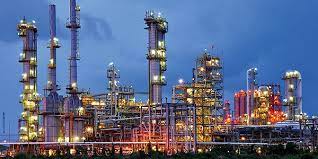The idea that the energy transition to an energy system dominated by wind and solar power appears to be at odds with the idea of an oil and gas refining industry.
Yet this is a superficial contradiction: wind and solar cannot exist without oil and gas refining. Now, Chinese refiners are taking advantage of this fact.
Reuters reported this week that petrochemicals producers in the Asian nation were investing tens of billions to expand their production capabilities for high-end products used in the wind and solar industries.
Private and state-owned refiners alike were in a rush to position themselves as suppliers of things like carbon fiber for wind turbine blades, polyolefine elastomers for solar panels, and polyethylene for lithium-ion batteries.
The petrochemicals segment of the oil and gas industry has for years been seen by analysts and industry players alike as the only guaranteed part of the business that had a chance for long-term survival in the transition, provided it goes as envisioned by its advocates.
Even if the electrification of everything was realistically possible, the world would still need petrochemical products in large volumes, even in 2050. Aware of this, some majors, notably Aramco, moved early to position themselves favorably.
Earlier this year, Aramco sealed two deals with Chinese petrochemicals producers, one of which was finalized earlier this month: the Saudi state oil major bought a 10% stake in Rongsheng Petrochemical for $3.6 billion. Under the deal, Aramco will supply 480,000 bpd of crude to the Chinese refiner over a period of 20 years.
Speaking of Aramco, the Saudi major is working on the domestic growth front, too. Last month, Aramco and French TotalEnergies inked an agreement for the construction of a new petrochemical complex in the Kingdom, valued at $11 billion.
Saudi Arabia’s fellow OPEC member Iraq is also eyeing growth in petrochemicals. Earlier this year, reports emerged that the $8.5-billion Nibras petrochemical complex project had resurfaced in government plans, and construction could begin shortly.
Others are eager to boost their petrochemicals capabilities, too. At the start of this year, QatarEnergy greenlit the Ras Laffan Petrochemicals project, to be carried out in partnership with Chevron.
The project, whose value is estimated at $6 billion, is the biggest investment for the Qatari state energy company and will increase Qatar’s polyethylene production capacity to nearly 14 million tons annually. It will also make it the largest ethylene producer in the Middle East.
Indian refiners are also in on it. Mangalore Refinery and Petrochemicals Limited, a unit of state major ONGC, recently signaled a shift away from expanding its refining capacity in favor of boosting its petrochemicals capabilities.
According to the company, the shift, which could cost it as much as $5.7 billion, would help MRPL “de-risk” its future with a view to the energy transition.
“Overcapacity and weak demand for commodity chemicals, and China’s rapidly growing industries like solar, electric vehicles are the key drivers for companies to extend into high-end, high performing materials,” a Wood Mackenzie analyst told Reuters.
No doubt government policies elsewhere seeking to catch up with China on wind and solar, as well as EVs, are also among the drivers of the wave of petrochemical expansion that is currently underway. It is, indeed, a safe way to “de-risk” the future of the industry and secure long-term demand for oil and gas products.
It is, in a way, ironic that the energy transition away from hydrocarbons literally depends on these very same hydrocarbons and their high-end derivatives. It was also unavoidable—there are no comparable substitutes for the petrochemicals used in wind and solar power installations, and it will be a while, if ever, until such substitutes appear on the transition stage.

 Iran Energy News Oil, Gas, Petrochemical and Energy Field Specialized Channel
Iran Energy News Oil, Gas, Petrochemical and Energy Field Specialized Channel



